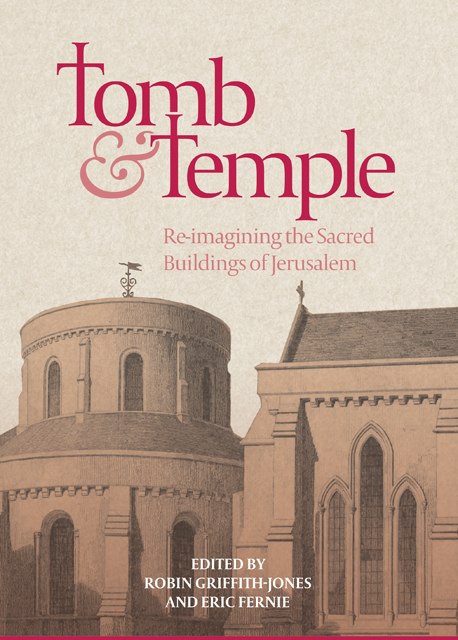Book contents
- Frontmatter
- Contents
- Illustrations
- Preface
- Contributors
- Abbreviations
- Editors’ Note
- Introduction
- Part I Re-presenting Jerusalem
- Part II The Church of the Holy Sepulchre
- Part III The Noble Sanctuary / The Temple Mount
- Part IV The Orthodox Churches
- Part V Round Churches in the West
- Appendix: The Knights’ Effigies: Newly Discovered Drawings by John Guillim, c. 1610
- Epilogue
- Index
- Already Published
16 - Representations of the Holy Sepulchre
Published online by Cambridge University Press: 17 January 2023
- Frontmatter
- Contents
- Illustrations
- Preface
- Contributors
- Abbreviations
- Editors’ Note
- Introduction
- Part I Re-presenting Jerusalem
- Part II The Church of the Holy Sepulchre
- Part III The Noble Sanctuary / The Temple Mount
- Part IV The Orthodox Churches
- Part V Round Churches in the West
- Appendix: The Knights’ Effigies: Newly Discovered Drawings by John Guillim, c. 1610
- Epilogue
- Index
- Already Published
Summary
Some publications remain useful and in circulation for decades after their appearance. I think, for example, of Robert Willis’s studies in the nineteenth century of English medieval cathedrals and abbey churches, and Arthur Kingsley Porter’s volumes on Lombard architecture of the early twentieth century. But even beside these two illustrious examples, Richard Krautheimer’s article of 1942 on architectural iconography, really on the Holy Sepulchre, stands out. I say this because the publications of Willis and Porter are primarily empirical studies, collections of documentary and material information, whereas Krautheimer’s empirical base is much smaller and the area of interpretation correspondingly larger, and for that to have survived in the way it has is remarkable.
Krautheimer stresses the great latitude medieval patrons and architects allowed themselves in making connections, adding that the results are hardly copies; and Peter Fergusson has suggested that similitudo should be translated ‘representation’, while ‘association’ is even more circumspect. It may, however, be convenient to continue to use the word ‘copy’, as long as one is careful to note its shortcomings. The chief question then is, whatever they are called, how are they identified?
The main elements of the Holy Sepulchre relevant to the discussion are the following [Fig. 3.1, p. 77 above]. The building erected by Constantine was based on a Roman tomb and was therefore centralised. It was circular with an aisle and three absidioles, and had an arcade with pairs of piers marking the west, north and south sides, and probably the east as well, and three columns in each section between, making six or eight piers and twelve columns. In elevation it had a main arcade, a gallery and (at least from the rebuilding in the first half of the eleventh century) a conical roof with an oculus.
The Incarnation, the Crucifixion and the Resurrection are the three most important events in the life of Christ. Of these, the Resurrection lends itself most easily to being represented by a building, so it is perhaps not surprising that the Holy Sepulchre was so widely copied. Restricting myself to the Latin West, I have arranged the candidates under four headings: baptisteries, those with evidence from both function and form, those based on form alone, and dimensions.
- Type
- Chapter
- Information
- Tomb and TempleRe-imagining the Sacred Buildings of Jerusalem, pp. 329 - 338Publisher: Boydell & BrewerPrint publication year: 2018

